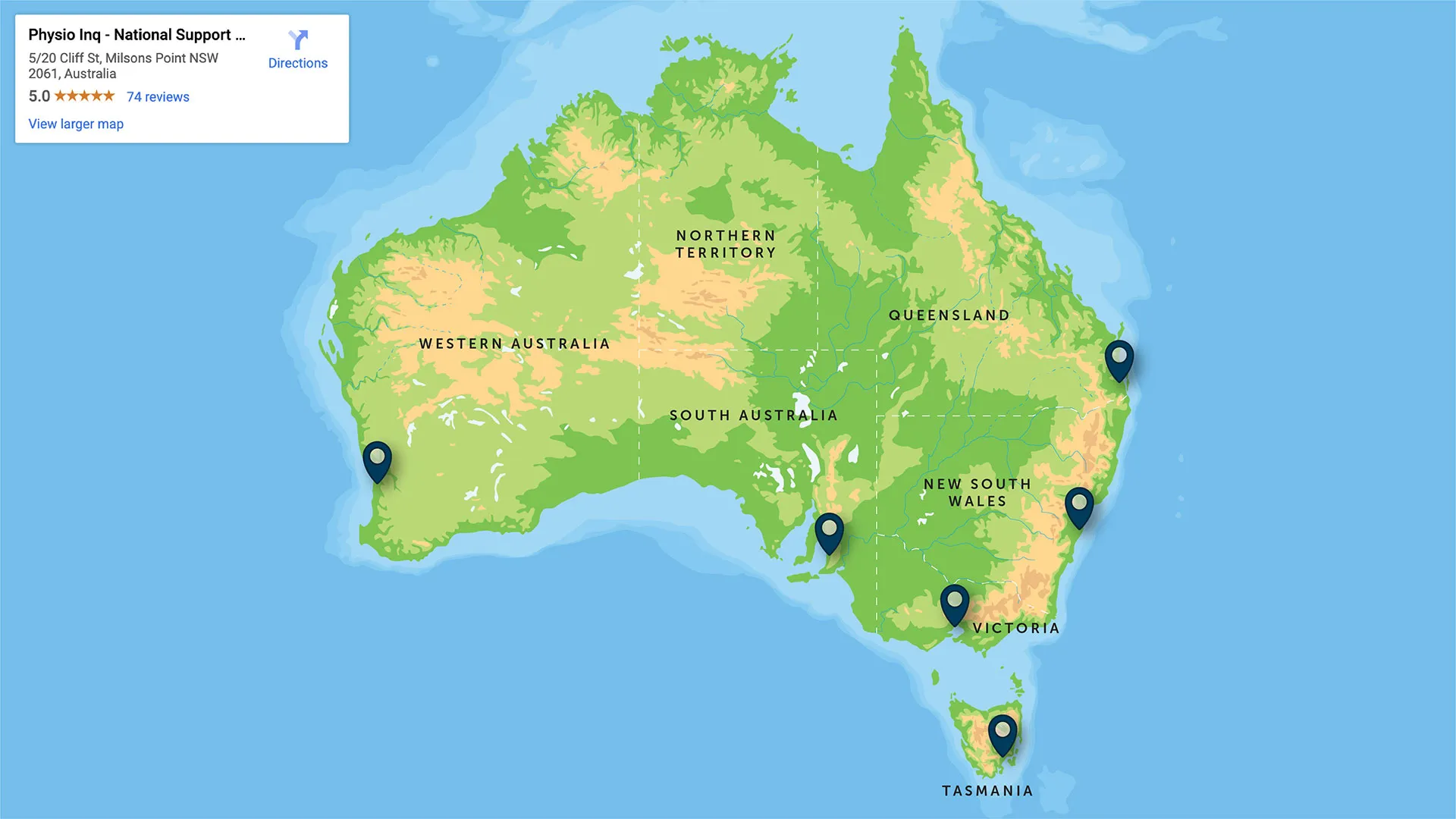How Much Tax Does a Small Business Pay in Australia?
Originally Published Jul 1, 2021
Income tax for small businesses in Australia is a complicated topic. From quarterly payments to various thresholds and tax rates, it�s no wonder small business owners feel like pulling their hair out when it comes to paying taxes.

Image Source: Photo by Nataliya Vaitkevich from Pexels
Income tax for small businesses in Australia is a complicated topic. From quarterly payments to various thresholds and tax rates, it’s no wonder small business owners feel like pulling their hair out when it comes to paying taxes.
While it’s generally suggested that you work with a knowledgeable business accountant to help you with your company taxes, here, we’re going over some of the basics of small business taxes in Australia.
For starters, the definitions you’ll need to understand when figuring out your company taxes are:
Income tax is the tax you’ll pay on your company’s profits after deductions and concessions.
Capital gains tax is the tax you’ll pay on any company assets you’ve sold for a profit over the last 12 months.
Goods and services tax is your responsibility although it is technically paid by the consumer on your products and services.
Payroll tax is the tax some businesses will pay for the salaries you’ve paid your employees.
Many small businesses in Australia won’t have to pay all these taxes every quarter or every year. Still, they’re likely to come up at some point and are worth understanding at a basic level.
Now, without any further ado, let’s get straight into some of the finer details of small business tax for Australian companies.
How much tax does a business pay on profits?
The Australian company tax rates are 26% and 30% while the GST tax rate is 10%. Your payroll tax rate depends on your state or territory and the total amount you spend on taxable wages.
- If your company makes less than the aggregated income threshold (in 2019/2020 it was $50 million) AND your passive income was less than 80% of your accessible income, then, you’ll pay 26% for small business tax Australia-wide.
- If your company makes more than the aggregate income threshold and your passive income was more than 80% of your accessible income, then, you’ll pay the 30% tax rate.
- If you’re a sole trader, you won’t pay any tax on the first $18,200 you earn. You’ll pay income taxes on your individual tax return as a sole trader.
- If you don’t have many employees, you may not need to pay payroll tax either as these taxes also operate on a threshold.
If your company makes more than $75,000 per year, you’ll need to register for GST. GST requires you to pay 10% of your taxable goods and services which is added to the cost of your products and shouldered by the consumer. However, it’s your responsibility to pay that tax to the ATO so the GST you charge should be saved for that purpose.
Once you’re registered for GST, you’ll also need to submit a quarterly Business Activity Statement (BAS). These quarterly submissions are when you’ll pay your taxes as a business.
Keep in mind that the small business tax rate changes every year. Always check with your accountant to ensure you understand your tax obligations.

Image Source: Photo by Nataliya Vaitkevich from Pexels
How much is tax rate for small businesses in Australia?
The tax rate for small businesses in Australia is 26%. However, if you operate your small business as a sole trader, your business can operate tax-free for the first $18,200 you earn.
You’ll also likely need to pay 10% GST which has been shouldered by your customers, Capital Gains Tax (CGT) if you sold a large company asset, and payroll tax if your company spends above the threshold in wages.
To pay your GST, add 10% to the cost of your products and services to account for the tax. CGT can be calculated based on either the Indexation Method (for assets you owned for more than 12 months) or the Other Method (for assets you owned for less than 12 months).
As for payroll tax, the thresholds vary depending on the state or territory in which your company is registered. These thresholds for the 2019/2020 tax year are as follows:
- ACT: 6.85% if you pay $2,000,000 or more in taxable wages
- NT: 5.5% if you pay $1,500,000 or more in taxable wages
- NSW: 4.85% if you pay $1,200,000 or more in taxable wages
- VIC: 4.35% (2.02% for regional employers) if you pay $650,000 or more in taxable wages
- QLD: 4.75% (3.75% for regional employers) if you pay $1,500,000 or more in taxable wages; 4.95% if you pay $6,500,000 or more in taxable wages
- SA: Variable between 0% and 4.95% if you pay $1,500,000 or more in taxable wages; 4.95% if you pay $1,700,000 or more in taxable wages
- TAS: 4% if you pay$1,250,000 or more in taxable wages; 6.1% if you pay $2,000,000 or more in taxable wages
- WA: 5.5% (diminishing) if you pay $100,000,000 or more in taxable wages; 6% if you pay between $100,000,000 and $1,500,000,000 in taxable wages; 6.5% if you pay $1,500,000,000 or more in taxable wages
As you can see, if you own a small business, chances are you won’t have to pay payroll tax.

Image Source: Photo by Nataliya Vaitkevich from Pexels
How much is business tax in Australia?
The amount of business tax you’ll pay depends on your income and deductions.
- Assessable income includes your pre-tax gross income from business activities and other income such as capital gains. This does not include GST or GST credits.
- Deductions are expenses that are involved in running your business that you can claim on your company’s tax return.
How do you calculate small business taxes?
If you need a company tax calculator, Australia businesses can use the ATO website to find the right calculators and tools for your circumstances.
Beyond automated calculators, it’s also advisable to use a business accountant. Often, these experts help you pay the least amount of tax by qualifying for the most deductions and credits possible.

Image Source: Photo by Mikhail Nilov from Pexels
What is the tax-free threshold for a small business?
For sole traders, the tax-free threshold is $18,200.
There is no tax-free threshold for small businesses operating as a registered company. The tax-free threshold is only for a small business operating under a sole trader ABN and is as follows:
| Sole Trader Income | Tax Rate |
| $0-$18,200 | Tax-Free |
| $18,201-$37,000 | $0.19 for every dollar over $18,200 |
| $37,001-$90,000 | $3,572 + $0.325 for every dollar over $37,000 |
| $90,001-$180,000 | $20,797 + $0.37 for every dollar over $90,000 |
| $180,001+ | $54,097 + $0.45 for every dollar over $180,000 |
Payroll tax also operates on tax-free thresholds. However, those depend on the location in which your business is registered as mentioned above.
How much tax do I pay on ABN?
The amount of tax you’ll pay on an ABN depends on whether you have an ABN as a sole trader or as a company. Again, sole traders don’t pay tax on the first $18,200 they earn, whereas companies owe taxes on all their profits.
Additionally, sole traders pay their business taxes as part of their individual tax return, whereas if your ABN is registered as a company, you’ll need to file a separate company tax return.
Again, the amount of tax you’ll pay depends on your profits, expenses, capital gains, employee salaries, and the state or territory in which your company is registered.
If by now, you’re still confused and slightly overwhelmed, you’re not alone. Company taxes are a headache in the best of times, so don’t worry if you don’t have expert-level knowledge of these complex rates and options.
Keep accurate records of your earnings and expenses and work with your business accountant to make sure you’re paying the taxes you’re legally responsible for. Over time, you’ll get the hang of it.
Was that helpful? Check out our other business blogs to help achieve your small business goals.
For more handy business tips and tricks, check out our other trending blogs:
Are you interested in owning a health care business, or do you require help running yours?
Disclaimer
The information provided on this blog is intended for educational and informational purposes only. It is not intended to be a substitute for professional advice or treatment. Always seek the advice of a qualified professional with any questions you may have regarding a medical condition. Never disregard professional medical advice or delay in seeking it because of something you have read on this blog.

